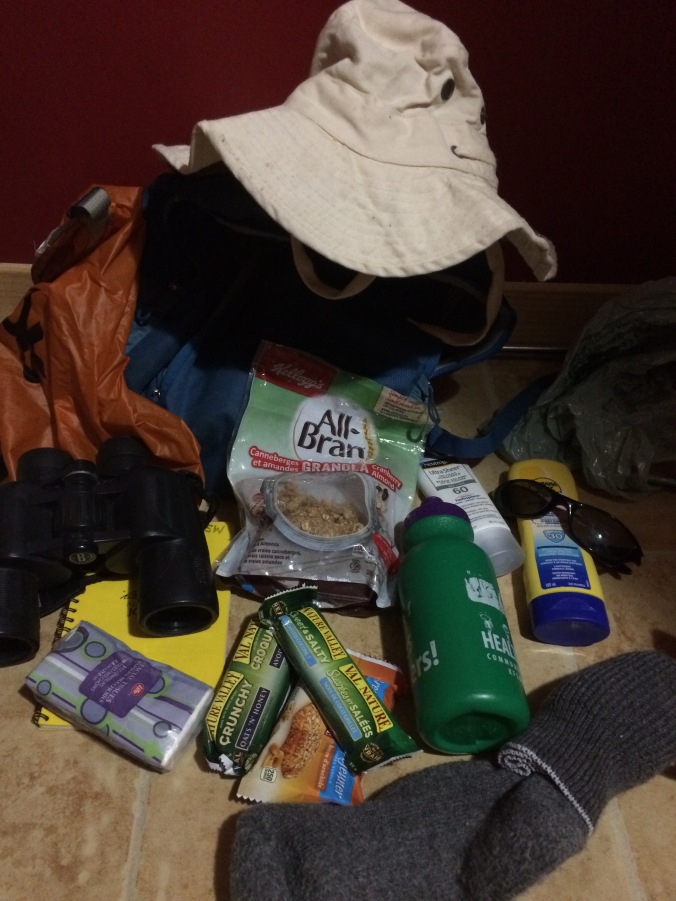One week before I officially started a Ph.D., I was already preparing to go into the field. Since I had done fieldwork in a bird colony before, I knew what to expect. I wasn’t fazed when my supervisor warned, “Make sure to bring clothes that you’re willing to get poop on, a wide brimmed hat so you don’t get poop on your face, and ear plugs.” Despite the common theme in his warnings, I was still overly stoked to be going back out to the field. I think one of the biggest perks of going into the field as a biologist is the chance to get your hands dirty.
I was feeling confident about the fieldwork this time around. I had my bags packed – sunscreen (check!), snacks (check!), extra socks (check!), and binoculars (check!). I was prepared and feeling good. The field team took the boat out for the first test ride of the season and everything went smoothly. All was fine. What possibly could go wrong?
As you read this, you are probably shaking your head and thinking, “Shouldn’t have said that…”
It was a beautiful day in late April. The wind was a little chilly, but nothing a few clothing layers couldn’t solve. The sun was shining, making the lake sparkle with an invitation to jump in. The colony we were headed towards was only just outside the harbour, which made for a very short boat ride to enjoy the weather but a long enough ride to bring my excitement to a peak. This colony was known to have one of the highest densities of nesting cormorants in Lake Erie, so there were bound to be enough nests with eggs for my project.
Almost right after leaving the dock we could see there were adult cormorants gathered in the centre of the island, which was a good sign. We drove the boat up closer to the island, as close as we could get without grounding ourselves on large rocks and piercing a hole in the bottom, then dropped anchor and climbed ashore. (This all sounds very streamlined, but in fact it took about 30 minutes to unload all of our gear while wading in knee deep water wearing oversized survival suits. Not the easiest of tasks.)
Finally, we grabbed the pelican cases that we would use to carry the eggs we collected and headed over the edge of the rock pile towards the centre of the island. As we approached the colony, the adults flew off their nests into the nearby water as they usually do. Only this time, when we looked at the nests they had just left, there were no eggs!
Baffled, we spent several minutes observing the empty nests. There weren’t even any signs of broken egg shells, a normal result of predation. But then as we stood there, a small fox scurried right past our feet and through the cormorant nests to the other side of the island.
“Well…that can’t be a good sign,” my supervisor said. With the empty egg cases in hand, we walked back to the water and started the process of reloading the boat.
It is still a mystery what happened on that island. Was the fox able to steal and cache every egg that the cormorants laid? Or did the presence of the fox on the island scare the cormorants enough that they did not reproduce in the first place?
All I know is the next time I need to go collect eggs, I should hire a fox as an assistant.


Pingback: Back to the drawing board | Dispatches from the Field
Pingback: Wow, time flies! | Dispatches from the Field